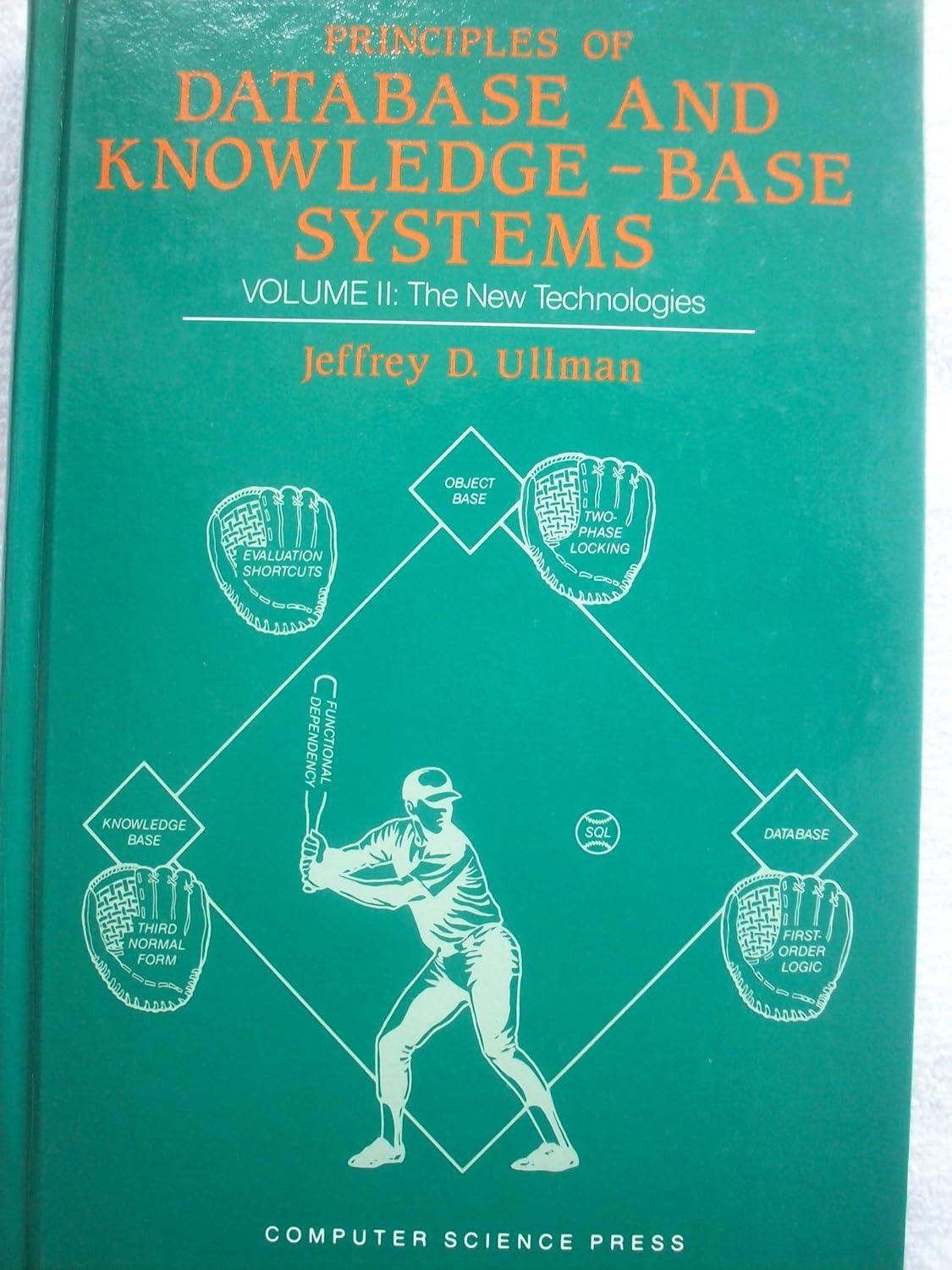Question
IN SCALA: * INSTRUCTIONS * * Complete the exercises below. For each EXERCISE comment, add * code immediately below the comment. * * * 2.
IN SCALA:
* INSTRUCTIONS * * Complete the exercises below. For each "EXERCISE" comment, add * code immediately below the comment. * * * 2. You MUST NOT edit the SBT configuration and tests. Altering it in your submission will * result in 0 points for this assignment. * * 3. You MUST NOT use while loops or (re)assignment to variables (you can use "val" declarations, * but not "var" declarations). You must use recursion instead. * * 4. You may declare auxiliary functions if you like. *
object fp2 {
// EXERCISE 1: complete the following recursive definition of a "map" function // for Scala's builtin List type. You must not use the builtin "map" method. // Your implementation of "map" MUST be recursive. def map [A,B] (xs:List[A], f:A=>B) : List[B] = { // TODO: Provide definition here. xs match { case Nil => Nil case y::ys => f (y) :: map (ys, f) } }
// EXERCISE 2: complete the following recursive definition of a "filter" function // for Scala's builtin List type. You must not use the builtin "filter" method. // Your implementation of "filter" MUST be recursive. def filter [A] (xs:List[A], f:A=>Boolean) : List[A] = { // TODO: Provide definition here. }
// EXERCISE 3: complete the following recursive definition of an "append" function // for Scala's builtin List type. You must not use the builtin ":::" method. // Your implementation of "append" MUST be recursive. // HINT: use "::" in the body of the cons-cell case. def append [A] (xs:List[A], ys:List[A]) : List[A] = { // TODO: Provide definition here. null }
// EXERCISE 4: complete the following recursive definition of a "flatten" function // for Scala's builtin List type. You must not use the builtin "flatten" method. // Your implementation of "flatten" MUST be recursive. // HINT: use either ":::" or your definition of "append" in the body of the cons-cell case. // EXAMPLE: // - flatten (List ((1 to 5).toList, (6 to 10).toList, (11 to 15).toList)) == (1 to 15).toList def flatten [A] (xss:List[List[A]]) : List[A] = { // TODO: Provide definition here. null }
// EXERCISE 5: complete the following recursive definition of a "foldLeft" function // for Scala's builtin list type. You must not use the builtin "foldLeft" method. // Your implementation of "foldLeft" MUST be recursive. // HINT: foldLeft ( Nil, e, f) == e // foldLeft (y::ys, e, f) == foldLeft (ys, f (e, y), f) def foldLeft [A,B] (xs:List[A], e:B, f:(B,A)=>B) : B = { // TODO: Provide definition here. e }
// EXERCISE 6: complete the following recursive definition of a "foldRight" function // for Scala's builtin list type. You must not use the builtin "foldRight" method. // Your implementation of "foldRight" MUST be recursive. // HINT: foldRight ( Nil, e, f) == e // foldRight (y::ys, e, f) == f (y, foldRight (ys, e, f)) def foldRight [A,B] (xs:List[A], e:B, f:(A,B)=>B) : B = { // TODO: Provide definition here. e }
// EXERCISE 7: complete the following definition of a "joinTerminateLeft" function // to take a list of strings "xs" and concatenate all strings using a string "term" // as a terminator (not delimiter) between strings. You MUST use your foldLeft defined above. // EXAMPLES: // - joinTerminateLeft (Nil, ";") == "" // - joinTerminateLeft (List ("a","b","c","d"), ";") == "a;b;c;d;" def joinTerminateLeft (xs : List[String], term : String) : String = { // TODO: Provide definition here. null }
// EXERCISE 8: complete the following definition of a "joinTerminateRight" function // to take a list of strings "xs" and concatenate all strings using a string "term" // as a terminator (not delimiter) between strings. You MUST use your foldRight defined above. // EXAMPLES: // - joinTerminateRight (Nil, ";") == "" // - joinTerminateRight (List ("a","b","c","d"), ";") == "a;b;c;d;" def joinTerminateRight (xs : List[String], delimiter : String) : String = { // TODO: Provide definition here. null }
// EXERCISE 9: complete the following recursive definition of a "firstNumGreaterThan" function // to find the first number greater than or equal to "a" in a list of integers "xs". // If the list is empty or there is no number greater than or equal to "a", throw a RuntimeException (with no argument). // Your implementation of "firstNumGreaterThan" MUST be recursive. // EXAMPLES: // - firstNumGreaterThan (5, List (4, 6, 8, 5)) == 6 def firstNumGreaterThan (a : Int, xs : List[Int]) : Int = { // TODO: Provide definition here. -1 } // EXERCISE 10: complete the following recursive definition of a "firstIndexNumGreaterThan" function // to find the index (position) of the first number greater than or equal to "a" in a list of integers "xs". // If the list is empty or there is no number greater than or equal to "a", throw a RuntimeException (with no argument). // The first index should be zero (not one). // Your implementation of "member" MUST be recursive. // EXAMPLES: // - firstIndexNumGreaterThan (5, List (4, 6, 8, 5)) == 1 // HINT: this is a bit easier to write if you use an auxiliary function. def firstIndexNumGreaterThan (a : Int, xs : List[Int]) : Int = { // TODO: Provide definition here. -1 }
}
Step by Step Solution
There are 3 Steps involved in it
Step: 1

Get Instant Access to Expert-Tailored Solutions
See step-by-step solutions with expert insights and AI powered tools for academic success
Step: 2

Step: 3

Ace Your Homework with AI
Get the answers you need in no time with our AI-driven, step-by-step assistance
Get Started


